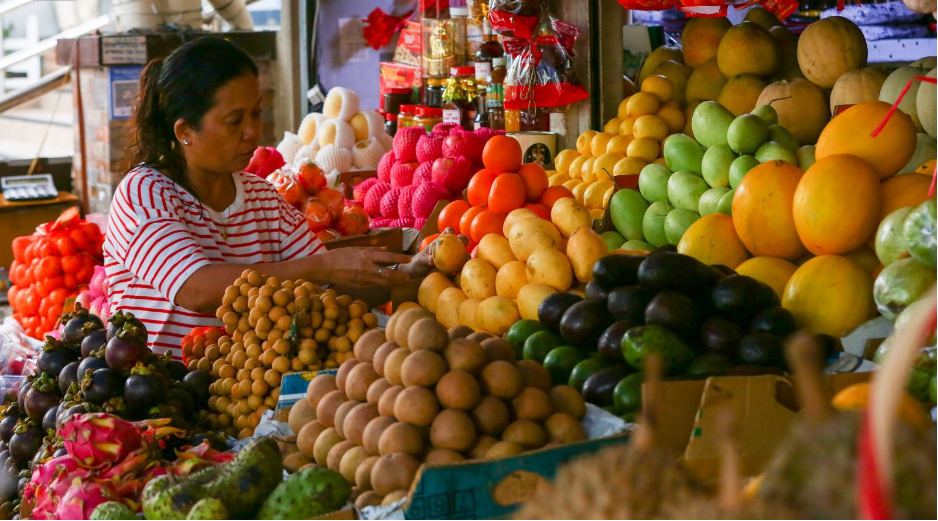Consumer prices surge to 15-year high in 2023

At a Glance
- December’s consumer price growth eased, with headline inflation dropping to 3.9 percent from November’s 4.1 percent.
- Annual inflation throughout the first year of the Marcos administration averaged 6.0 percent, the highest since the 8.2 percent recorded during the 2008 global financial crisis.
- In 2023, inflation surpassed the government’s target band of 2.0 percent to 4.0 percent, averaging 6.0 percent for the year.
- President Marcos has faced inflation challenges, primarily driven by rising food and fuel costs since taking office in June 2022.
- Inflation slowed between March and July but picked up again in August and September before decelerating in the fourth quarter.
- National Economic and Development Authority Secretary Arsenio M. Balisacan emphasized the government’s close monitoring of prices and inflation risks in 2024, along with measures to protect Filipino households’ purchasing power.
The rate of increase in consumer prices continued to slow in December, while the country’s annual inflation climbed to its highest level in 15 years, data from the Philippine Statistics Authority (PSA) showed.
Last month’s consumer price growth showed sustained signs of easing, with headline inflation dropping to 3.9 percent from November’s 4.1 percent and marking a significant decline from the 8.1 percent recorded in December 2022.
However, on an annual basis, inflation throughout the first year of the Marcos administration averaged 6.0 percent, its highest level since the 8.2 percent recorded during the peak of the global financial crisis in 2008.
The latest figure also surpassed the 5.8 percent seen in 2022 and notably exceeded the government’s target band of 2.0 percent to 4.0 percent.
Since assuming office in June 2022, President Marcos has grappled with a surge in inflation, reaching levels not seen in 14 years at the beginning of last year, primarily driven by rising food and fuel costs.
Although inflation slowed between March and July, it picked up again in August and September before decelerating in the fourth quarter.
Following the 15-year high inflation in 2023, National Economic and Development Authority (NEDA) Secretary Arsenio M. Balisacan said the government will be closely monitoring prices and inflation risks this year, while also implementing measures to safeguard the purchasing power of Filipino households.
The Marcos administration’s economic team, with Balisacan among its members, is confident that inflation for 2024 will be in line with the government’s target of 2.0 percent to 4.0 percent.
“We must remain vigilant in monitoring the prices of our commodities and continue to implement strategies to address short-term and long-term inflation-related challenges,” Balisacan said in a statement.
These strategies, he added, include implementing timely deployment of trade policy tools along with sustained investments in irrigation, flood control, supply chain logistics, and climate change adaptation.
Core inflation, which excludes selected volatile food and energy items, settled at 4.4 percent in December from 4.7 percent in the previous month, bringing the average full year 2023 to 6.6 percent.
Based on the PSA data, the largest contributor to the December slowdown was the lower inflation rate on housing, water, electricity, gas, and other fuels at 1.5 percent.
It contributed 59.6 percent to the total headline inflation and mostly manifested in the lower costs of electricity, liquified petroleum gas, and rentals.
All major commodity groups such as food and restaurants posted lower inflation rates except transport at 0.4 percent in December from the 0.8 percent slowdown in November.
Amid these downtrends, an increase was still observed in rice which had an inflation rate of 9.6 percent and was the highest since March 2009.
Meanwhile, the inflation rate in the National Capital Region (NCR) for December also declined to 3.5 percent, down from 7.6 percent noted in December 2022 and 4.2 percent in November last year.
Lower costs in electricity also contributed to the NCR’s inflation downtrend at 9.0 percent from November’s 20.4 percent.
In terms of food, meat and vegetables also impacted NCR’s inflation drop, however, higher costs were noted in rice (13.6 percent from 11 percent) and fish and other seafood (6.1 percent from 5.4 percent).
For areas outside NCR, the inflation rate was posted at 4 percent, a slight drop from 4.1 percent in November 2023 and 8.2 percent in December 2022.
Likewise, lower costs in electricity and food contributed to the decline in its inflation rate, though a huge increase was seen in the price of rice with an inflation rate of 20.4 percent from 16.5 percent in November 2023.
Of regions outside NCR, the Bangsamoro Autonomous Region in Muslim Mindanao saw the highest inflation in December last year at 6.2 percent from 5.9 percent reading in November 2023.
Region II or Cagayan Valley experienced the lowest inflation at 1.6 percent from 2.4 percent in November a year ago.
The PSA also noted that all regions had lower inflation rates expect Bicol, Central Visayas, Eastern Visayas, Northern Mindanao, Davao, SOCCSKARGEN, and BARMM; while Caraga retained its inflation rate at 4.1 percent.
Further, the inflation for poor households in December 2023 posted a slight increase at 5 percent from 4.9 percent in November last year, yet relatively lower than the 9.4 percent in December 2022.
The prices of food and transport greatly impacted the poor households in December last year which increased to 7.4 percent and 1.5 percent, respectively, the PSA stated. — Xander Dave Ceballos
*****
Credit belongs to: www.mb.com.ph
 Atin Ito First Filipino Community Newspaper in Ontario
Atin Ito First Filipino Community Newspaper in Ontario






